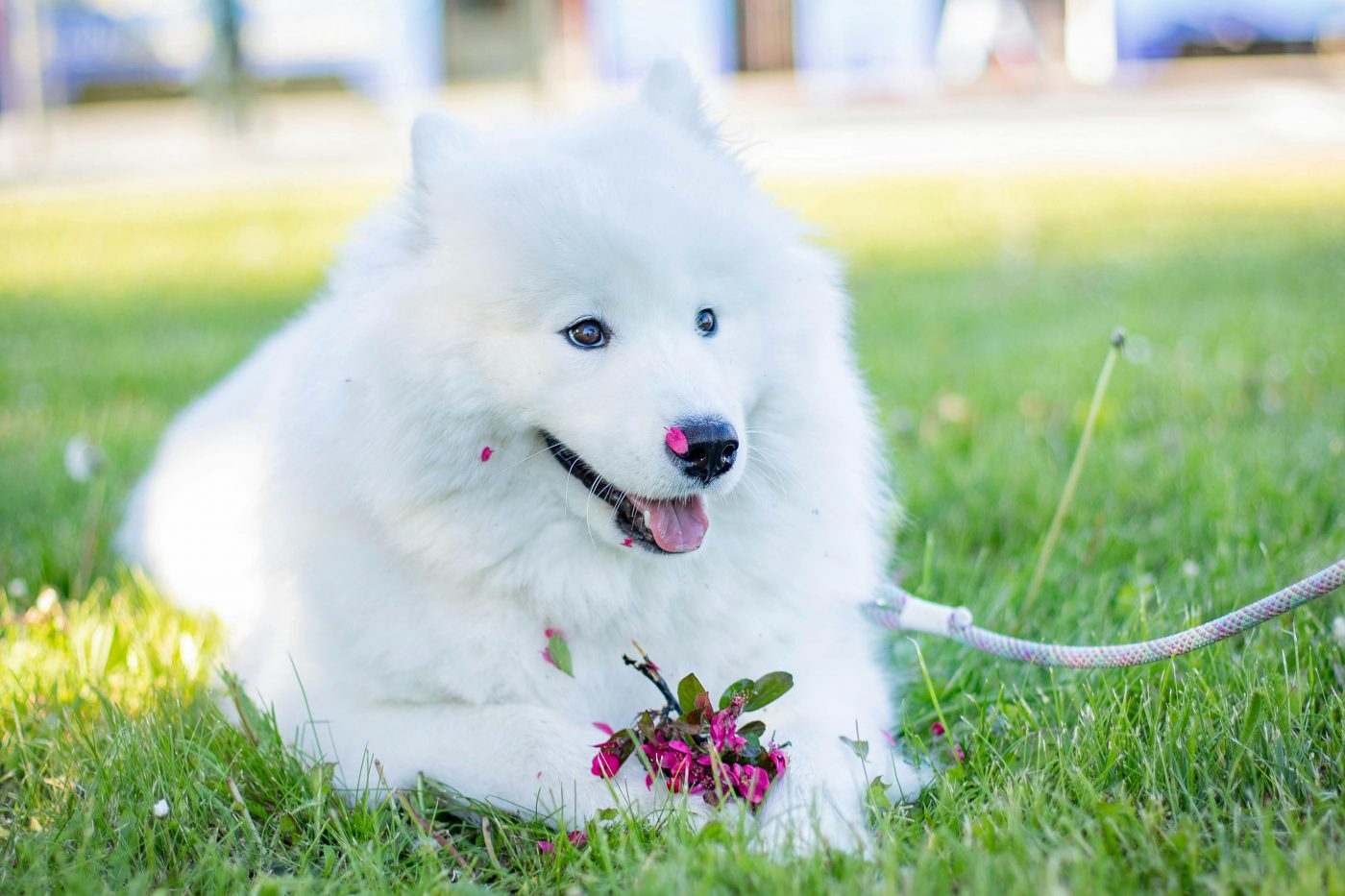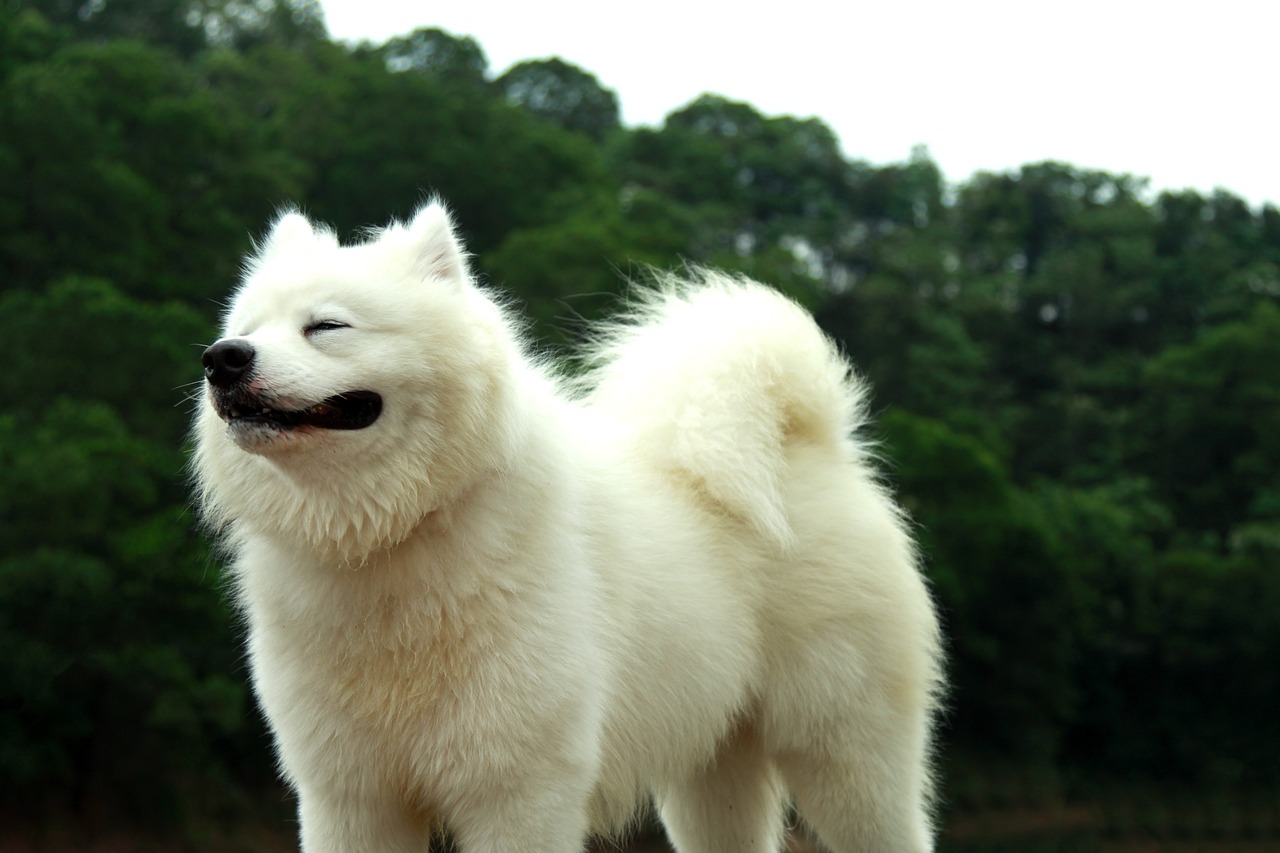The Samoyed, with its stunning white coat, gentle smile, and friendly disposition, is a breed that exudes warmth and charm. Originating from the harsh, cold climates of Siberia, the Samoyed was named after the Samoyedic peoples of Siberia, who relied on these versatile dogs for herding reindeer, hunting, and hauling sleds. This ancient working breed, known for its incredible endurance and strength, has played a crucial role in the survival of the Samoyedic people, providing companionship and assistance in some of the world’s most unforgiving environments. Over the years, the Samoyed has transitioned from a sled-pulling and herd-protecting dog to a beloved family pet, known for its gentle nature and striking appearance. This article aims to explore the rich history and origin of the Samoyed, shedding light on how this beautiful breed has evolved from a vital working dog to a cherished companion while retaining its joyful spirit and resilience.

The Samoyedic Roots
The Samoyed breed traces its origins back to the northwest region of Siberia, where it was developed by the nomadic Samoyedic people. These indigenous tribes lived in close harmony with their dogs, depending on them for survival. The Samoyeds were not just pets but integral members of the tribe, tasked with herding reindeer, protecting the flock from predators, and pulling sleds loaded with goods across the vast, snowy landscapes. The breed’s thick, white coat provided essential insulation against the freezing temperatures, while its friendly and sociable nature made it an ideal companion during the long, harsh Siberian winters.
Introduction to the Western World
The Samoyed was introduced to the Western world in the late 19th and early 20th centuries by explorers and adventurers who traveled to the Arctic regions. These dogs were highly valued for their sled-pulling abilities, particularly during polar expeditions. Notably, the breed played a significant role in Antarctic explorations, with several Samoyeds accompanying expeditions led by Ernest Shackleton and Roald Amundsen. Their endurance, strength, and ability to work in the most extreme conditions made them indispensable to these missions. The breed’s amiable disposition and striking appearance also captivated the explorers, leading to its eventual introduction to Europe and North America as an exotic pet.
Development and Recognition
As the Samoyed became more known outside Siberia, breed enthusiasts began to establish breeding programs to preserve and refine its characteristics. The breed was officially recognized by the Kennel Club (UK) in 1909 and by the American Kennel Club (AKC) in 1906. Breed standards were developed to emphasize the Samoyed’s unique features, such as its dense, white coat, “Sammy smile,” and gentle, adaptable temperament. Despite its growing popularity as a show dog and family pet, the Samoyed has retained much of its original working dog traits, including its robust health, intelligence, and versatility.
The Modern Samoyed
Today, the Samoyed is cherished worldwide as a companion and family pet. Known for its gentle nature, the breed is excellent with children and other pets, making it a beloved addition to many households. Samoyeds continue to excel in various dog sports, including agility, obedience, and herding, showcasing their intelligence and trainability. Their friendly disposition and striking appearance also make them popular in the show ring. Despite their evolution from working dogs to companions, Samoyeds still possess the strength and endurance of their ancestors, capable of participating in activities like sledding and skijoring.
Samoyed’s journey from the snowy expanses of Siberia to the hearts of dog lovers around the globe is a testament to the breed’s enduring appeal. From its origins as an indispensable helper of the Samoyedic people to its status as a cherished family pet, the Samoyed has remained a symbol of joy, resilience, and beauty. With its friendly smile and fluffy white coat, the Samoyed continues to captivate and charm, embodying the spirit of its ancient heritage while thriving in the modern world.
Frequently Asked Questions About The History of Samoyeds

1. What is the origin of the Samoyed breed?
The Samoyed breed originated from the Siberian region of Russia, developed by the Samoyedic people who migrated from central Asia to Siberia. These indigenous nomadic peoples relied on these dogs for a variety of tasks including herding reindeer, hunting, and pulling sleds. The breed’s name comes from these nomadic groups, reflecting its deep roots in the harsh Arctic environment where it was essential for survival, showcasing the breed’s incredible endurance, strength, and versatility.
2. How did the Samoyed get its distinctive white coat?
The Samoyed’s distinctive white coat evolved as a natural adaptation to its Arctic environment. The thick, double-layer coat served as insulation against the extreme cold, with the white color helping to reflect sunlight during the summer and providing camouflage in snowy landscapes. This coat not only protected the Samoyed from the elements but also contributed to its striking appearance, making it well-suited for its original work as well as a companion animal.
3. What were Samoyeds originally bred for?
Samoyeds were originally bred for their versatility in working roles in cold environments. They were used primarily for herding reindeer, a vital task for the survival of the Samoyedic people. Additionally, Samoyeds were employed in hunting and as sled dogs, pulling loads over snow and ice. Their friendly nature also made them excellent companions, sharing the living spaces of their nomadic owners and helping to keep them warm.
4. When did Samoyeds become recognized as a breed in the Western world?
Samoyeds were introduced to the Western world in the late 19th and early 20th centuries, gaining recognition as a distinct breed. Explorers and adventurers who visited the Arctic regions brought back stories and specimens of these remarkable dogs. The breed was officially recognized by the Kennel Club in the UK in 1909 and by the American Kennel Club in 1906, marking its formal introduction into dog breeding and showing communities outside its native Siberia.
5. What role did Samoyeds play in Arctic and Antarctic expeditions?
Samoyeds played crucial roles in Arctic and Antarctic expeditions during the late 19th and early 20th centuries. Their strength, endurance, and ability to work in the extreme cold made them ideal sled dogs for explorers venturing into the polar regions. Samoyeds were part of several notable expeditions, including those led by Ernest Shackleton and Roald Amundsen, where they were used to haul supplies and navigate the icy terrains. Their contributions to these missions underscored their resilience and work ethic.
6. Are there different types of Samoyeds?
While there is only one recognized breed of Samoyed, individual dogs can vary in size, coat density, and temperament. These variations are largely due to differences in breeding practices and the roles for which the dogs were intended. Show lines tend to have denser, more luxurious coats, while working lines may exhibit traits more aligned with the breed’s original utilitarian purposes, such as greater endurance or herding instinct.
7. How has the role of Samoyeds changed over time?
The role of Samoyeds has evolved significantly from their origins as working dogs in Siberia. While they still possess the physical attributes and temperament suited for herding and sledding, in modern times, Samoyeds are more commonly found as family pets and show dogs. Their friendly disposition, intelligence, and striking appearance have made them popular in homes around the world, as well as in various canine sports and competitions.
8. What are the key characteristics of Samoyeds?
Key characteristics of Samoyeds include their strong, muscular build, dense white coat, and “Sammy smile” — the upturned corners of their mouth. They are known for their gentle and friendly temperament, intelligence, and willingness to work. Samoyeds are social animals that thrive on human companionship, displaying loyalty and affection towards their families. Their thick double coat requires regular grooming to maintain its condition and manage shedding.
9. What health concerns are common in Samoyeds?
Samoyeds are generally a healthy breed, but they can be prone to certain genetic health issues. Common concerns include hip dysplasia, progressive retinal atrophy, and heart conditions. Samoyeds can also be susceptible to skin and coat problems if not properly groomed. Regular veterinary check-ups, a healthy diet, and proper exercise can help mitigate these risks and ensure a long, healthy life for a Samoyed.
10. How did Samoyeds gain popularity as companion animals?
Samoyeds gained popularity as companion animals through their participation in Arctic and Antarctic expeditions, where their friendly nature and striking appearance caught the attention of the Western world. Their adaptability to various roles, from working dogs to family pets, along with their gentle temperament and intelligence, made them well-suited to life as companion animals. The breed’s “smile” and fluffy coat have contributed to its appeal, making Samoyeds beloved pets in households worldwide.
11. What grooming needs do Samoyeds have?
Samoyeds require regular grooming to maintain their thick, white coats. This includes frequent brushing to prevent mats and tangles, as well as bathing to keep the coat clean and white. Special attention should be paid to their undercoat during shedding seasons to remove loose fur. In addition to coat care, Samoyeds need routine care for their nails, ears, and teeth to ensure overall health and well-being.
12. Are Samoyeds good with children and other pets?
Samoyeds are generally good with children and other pets, thanks to their friendly and gentle nature. They are patient and playful, making them excellent companions for families. Early socialization and training can help ensure positive interactions with children and other animals. However, as with any breed, supervision is recommended during interactions to ensure the safety of both the dog and the children.
13. What makes Samoyeds unique compared to other breeds?
Samoyeds are unique for their combination of strength, endurance, and amiability. Their ability to work in harsh conditions, coupled with their gentle nature and distinctive “smile,” sets them apart from other breeds. Samoyeds are versatile and capable of excelling in both working roles and as companion animals. Their thick, white coat and friendly disposition contribute to their unique appeal, making them a favorite among dog enthusiasts.
14. How can potential owners ensure a healthy Samoyed puppy?
Potential owners can ensure a healthy Samoyed puppy by selecting a reputable breeder who conducts health screenings on their breeding dogs. It’s important to ask for health clearances for common conditions in the breed, such as hip dysplasia and eye disorders. Meeting the puppy’s parents and observing the conditions in which the puppies are raised can offer insights into their health and temperament. Educating oneself about the breed’s care requirements can also help owners provide a nurturing environment for their Samoyed puppy.
15. How do Samoyeds adapt to different living environments?
Samoyeds are adaptable dogs that can thrive in various living environments, from cold climates to more temperate regions. They enjoy being part of a family and can adjust to living in a house with a yard or an apartment, as long as they receive adequate exercise and mental stimulation. Samoyeds’ thick coats protect them from cold weather, but they may require extra care in hotter climates to prevent overheating. Regular exercise, social interaction, and grooming are key to keeping a Samoyed happy and healthy in any environment.
 Toledo, United States.
Toledo, United States.